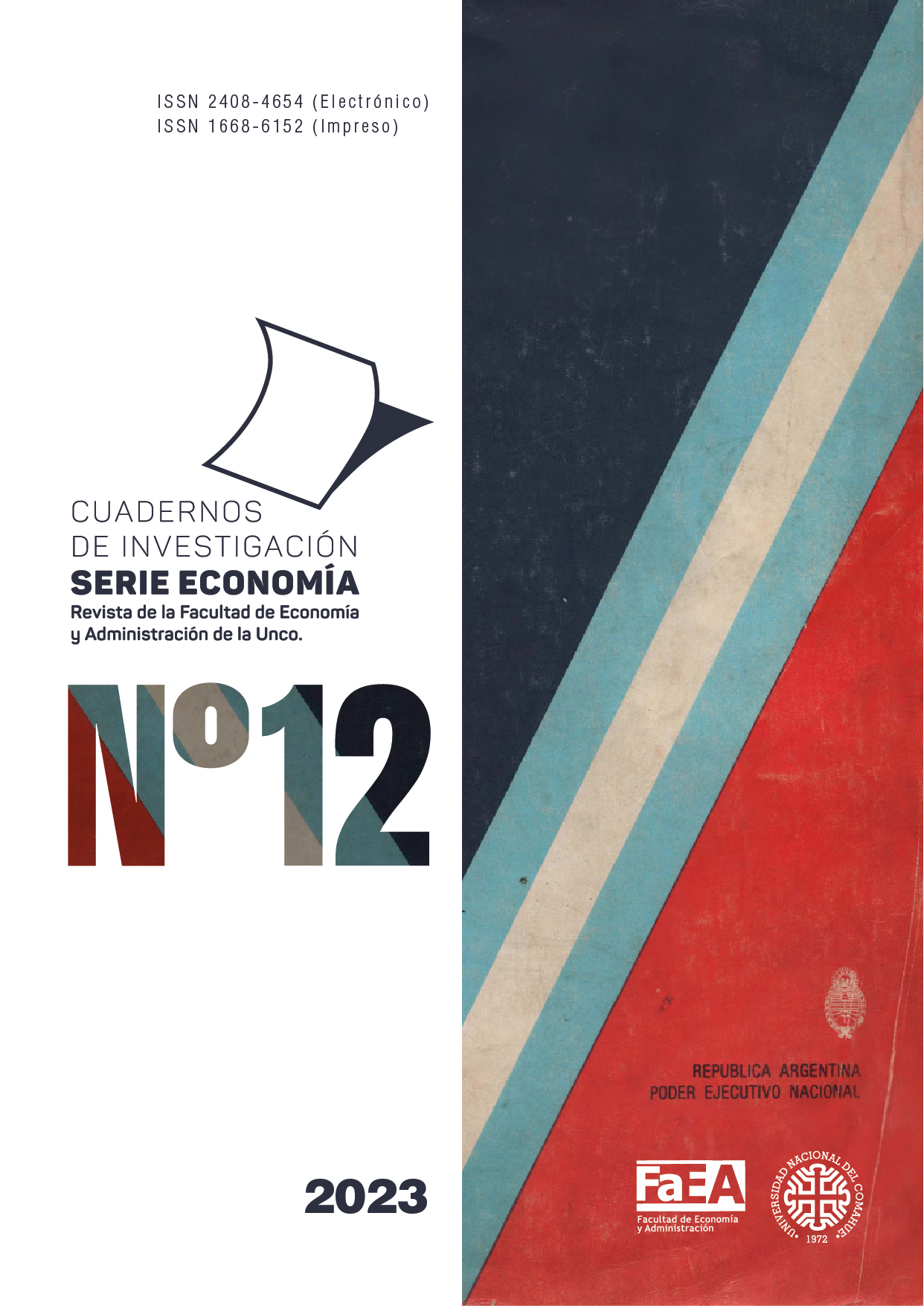El Modo de Desarrollo Mercado Interno Protegido. Inclusión de los territorios Patagónicos en el Proyecto Nacional (1946-1955)
Keywords:
Territories, industrialization, economic planning, provincialization, modes of developmentAbstract
The proposed work is part of the advances in the research project Emergence and
Socioeconomic Evolution of Towns of North Patagonia in Relation to National Development
Models (1880-1976) directed by Nora Díaz.
We will begin with a brief background about the transition from the Agro-export Model to the
beginning of Import Substitution Industrialization (ISI), to then delve into the industrialization
process developed during the first governments of Juan Domingo Perón and the measures
planned for the achievement of the objectives set out in the first and second Five-Year Plan.
The framework of the Theory of Regulation will be used to frame the economic model, the
social relations that were defined and the crisis that arose in the second government
administration, in a bidirectional continuity between the national and the local reality.
The sources on which we will base ourselves to analyze this stage are the Memories of the
Central Bank of the Argentine Republic (1946-1955), Volume I and Volume II of the First
Five-Year Plan, the Manual of the Second Five-Year Plan, the National Budget Laws (1946-
1955) and the Memoirs of the Government of Neuquén (1946-1954), presented to the
Superior Government of the Nation.
The general objective is to observe the changes that occur in the life of the national territories
from the new way of development of the country, especially in the territory of Neuquén, and
what is the role that is assigned to them in the new regime of accumulation.
Quantitative methods are foreseen in terms of the systematization of data arising from the
sources. They will be presented in charts, tables and graphs, as a result of the application of
analysis techniques and/or to support the historical explanation, trying to measure
relationships and discover links between them. Regarding the budget analysis, it will be
carried out both vertically and horizontally, presenting the indicators that are relevant to the
object of study.
From the qualitative point of view, we work on the interpretation and analysis of the
documentary sources.
It is observed that since the enactment of Law N° 1532 on the creation of National Territories,
at the end of the year 1884, and even fulfilling the requirements stipulated by it for the
creation of municipalities and provinces, the rights of the settlers were ignored, converted into
second-class citizens, lacking the power to choose and govern their own destinies. These
conditions just began to change from the configuration of a new mode of development and the
regime of accumulation produced by the industrialization process planned during the
governments of the mid-twentieth century led by President Perón. It required a survey of the natural resources available in the territories and the study of the feasibility of their
exploitation as energy generators for the development of the industry, resulting in strategic
assets.
Since this work is a first approximation to the subject, we observe that it is necessary to look
for new sources to delve into these aspects, for example, National Highway Archives, the
Army, Gendarmerie, Railways, YPF, among others, which we propose for future work.
Downloads
References
BCRA. (1948). Memorias del BCRA 1948.
BCRA. (1949). Memorias del BCRA 1949.
https://www.bcra.gob.ar/Pdfs/PublicacionesEstadisticas/Memorias/mem1949.pdf
BCRA. (1951). Memorias del BCRA 1951.
BCRA. (1953). Memorias del BCRA 1953.
BCRA. (1954). Memorias del BCRA 1954.
BCRA. (1955). Memorias del BCRA 1955.
Belini, Rougier. (2008). EL ESTADO EMPRESARIO EN LA INDUSTRIA ARGENTINA
Conformación y crisis. Manantial.
Cordone, H. G. (2004). Reseña histórica sobre la planificación económica en Argentina.
Ministerio de Economía y Producción.
Galasso, N. (2011). Historia de la Argentina: Desde los pueblos originarios hasta el
tiempo de los Kirchner. Colihue.
Jorge, E. (1986). Industria y Concentración Económica. Hyspamérica.
Neffa, J. C. (1998). Modos de Regulación, Regímenes de Acumulación y sus crisis en
Argentina (1880-1996). Eudeba.
Presidencia de la Nación, S. T. (1947). Primer Plan Quinquenal (Tomo I).
Presidencia de la Nación, S. T. (1953). Segundo Plan Quinquenal.
Provincia del Neuquén. (1945). Neuquén. Memorias de la Gobernación.
Schvarzer, J. (1979). Empresas públicas y desarrollo industrial en Argentina. En Economía
de América Latina (Vol. 3). CIDE.
Schvarzer, J. (1996). La Industria que supimos conseguir. Planeta
Downloads
Published
How to Cite
Issue
Section
License
Copyright (c) 2023 Cuadernos de Investigación. Serie EconomíaLicencia: Compartir - copiar y redistribuir el material en cualquier medio o formato.
La licenciante no puede revocar estas libertades en tanto usted siga los términos de la licencia.
https://creativecommons.org/licenses/by-nc-nd/2.5/ar/






